Children can drown quickly, silently, and in shallow water. Drowning is the second most common cause of death in children between one and four years of age. This is why knowing how to keep your baby and young child safe in the water at home, at the beach, or at the pool is so important.
Let’s dig into what water-related risks there are for babies and young children, how to prevent drowning, what dry drowning is (and is not!), and common questions parents have about water safety.
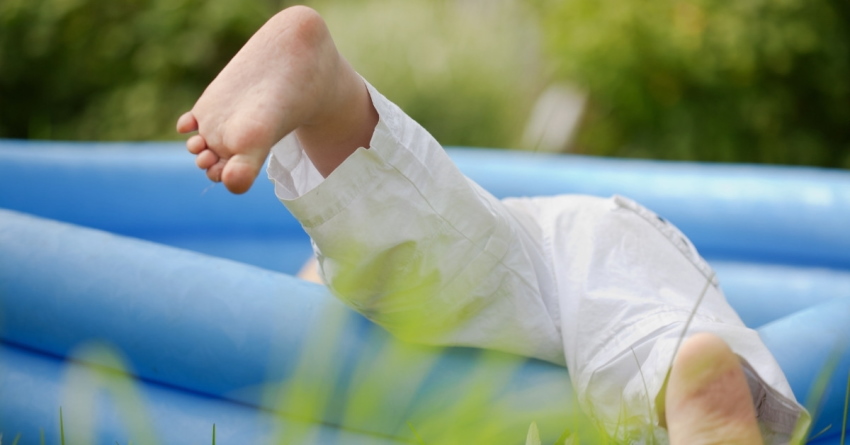
The information in this article is provided by Pediatrician Leah Alexander. The purpose is to provide examples and knowledge to help parents dig deeper into their baby’s situation, not to offer a complete picture or a possible diagnosis. Medical concerns should always be handled by a doctor who meets the patient in person.
Recreational water activities can be fun for the whole family during warm weather months. They not only help to keep everyone cool but also provide a form of exercise. Whether it’s a day at the beach, splashing in a backyard pool, or bath time with bubbles and rubber toys, these activities should be enjoyed while keeping water safety in mind.
What Are the Water-Related Risks for Children?
Infants
A baby’s first exposure to water is at bath time. Because of their small size, infants are often bathed in sinks or specially designed infant tubs. While these are much smaller than a full-sized tub of water, safety concerns remain.
Infants under four months old have limited head and neck control. It can be difficult for them to elevate their heads above even a shallow amount of water. When bathing an infant, parents should keep towels and other necessary items within arm’s reach to avoid leaving the baby unattended. Accidents can happen within seconds, so it is best to prevent them.
Once babies learn to crawl or cruise, they begin to explore their environments. Buckets of water, toilets, and unattended outdoor kiddie pools can become safety hazards. It is important that parents “child-proof” the home before this stage of development occurs, usually around nine months old.
Some parents enjoy swimming with their babies. This may be at a home pool or in one of the very popular baby swimming classes now available. However, the American Academy of Pediatrics does not recommend swimming lessons until after the first birthday. This is because infants lack the developmental skills to keep their heads above water to breathe.
Time in the pool can be fun and engaging, but parents should not expect their infant to be able to swim. Baby swimming classes should be seen as a fun baby-parent activity, not as a water safety or drowning prevention measure.
Toddlers
Toddlers are at high risk for water-related accidents. According to the Centers for Disease Control and Prevention, drowning is the second most common cause of death in one to four-year-olds (birth defects are number one). These accidents most often occur when a toddler unexpectedly manages to get access to a swimming pool. Therefore, parents must be vigilant in preventing unsupervised access, including above ground and kiddie pools.
Young toddlers are still learning to walk, and those who do may not have the best coordination. They can easily make their way toward a pool, and fall in. Although swimming classes are recommended for this age group, adult supervision is still necessary.
Small containers of water can still be a safety hazard at this age. Childproof locks on toilets or bathroom doors can prevent accidents inside the home. Creative landscaping features such as bird baths, ponds, and water drainage systems are also unsafe.
Children with Special Needs
Infants and children who have been diagnosed with a seizure disorder require additional water safety measures. Although they may take an anti-seizure medication, breakthrough or unexpected seizures are still possible. While bathing or swimming, supervision is essential to prevent drowning if a seizure occurs.
Children with autism are prone to “wandering off.” Although the exact cause is unknown, it is thought to be related to the child attempting to exit an overstimulating or upsetting environment. Water is shiny and appears calm, so this may be an attraction. As a result, the rates of accidental drownings in pools, ponds, or other bodies of water continue to increase among these children. It is important for parents to have a strategy to prevent such accidents.
Some Facts About Drowning
What Is Drowning?
Drowning is defined as impaired breathing as a result of submersion in a liquid, water in most cases. When water enters the lungs, it washes away surfactant, the chemical needed to keep the lungs inflated. It also causes swelling of the lung tissue, and interferes with the transfer of oxygen from into the bloodstream. Within minutes, the transport of oxygen to the brain and other vital organs ceases.
In 20% of drownings, the lower throat muscles, called the larynx, reflexively contract in response to water submersion. While this prevents the aspiration of water, the oxygen deprivation effects are the same.
In either scenario, consciousness is lost within two minutes, and irreversible brain injury occurs after four to six minutes. Heart muscle incurs damage, leading to abnormal heartbeats and cardiac arrest. Most cases of drowning are “silent,” and do not involve thrashing movements or vocalizations.
The “Dry Drowning” Myth
Unfortunately, there have been media reports of children who went swimming, appeared fine, then developed difficulty breathing days to weeks later. This phenomenon was mislabelled as “dry drowning” and has been the cause of much parental anxiety.
In reality, this term is associated with the small percentage of drowning cases where no water aspiration occurs. It is also refers to a sudden cardiac event that occurs while swimming. However, there are no documented cases of delayed-onset respiratory distress or other symptoms of drowning that develop days after an uneventful day at a pool or open body of water. Let this last sentence sink in. Dry drowning, the way it presented in media to worried parents, has never been documented.
What Should You Do When An Infant or Child Drowns?
Drowning is a medical emergency, and quick action prevents longterm disability or death.
The infant or child should first be removed from the water source. Emergency services should be contacted, by a bystander if possible, and cardiopulmonary (CPR) should be initiated if the infant or child is unresponsive. This includes checking for breathing, and administering rescue breaths if necessary.
If there is no pulse, chest compressions should be initiated. The technique for chest compressions is different for infants versus children, so parents should be aware. These life-saving measures should be continued until either the child responds, or emergency service providers arrive.
Drowning Prevention and Water Safety Measures
Inside of the Home
Containers of water or any fluid should be kept out of reach of crawling infants and walking toddlers. Examples include pails used for cleaning, ice chests, and large pet water bowls. Because motor skills are still developing and their coordination isn’t the best, it is easy for them to fall inside.
While bathing, infants and toddlers should be supervised, keeping all needed bath items within arm’s reach. Even stepping away for even few minutes could end in tragedy. After the bath, the tub should be fully drained.
And, yes, some toddlers think that playing in the toilet bowl is a fun activity. However, it is a drowning risk. Toilet seat locks or childproof bathroom door locks can prevent such injuries.
Backyard Pools
Small, kid-sized pools are a fun way for small children to stay cool on hot weather days. However, a responsible adult should remain nearby in case the child falls face down into the pool. A curious baby may also crawl into an unattended kiddie pool. After use, it should be emptied and put away to prevent rain water accumulation inside it that could create a safety hazard.
Both above-ground and in-ground pools pose the risk of a child gaining unexpected access. The AAP offers specific water safety recommendations for families with pools at home.
These include:
- A fence that is at least 4 ft high, and that surrounds the pool on all sides
- Avoid installing indoor home pools
- The fence door should be self-closing, open away from the pool, and have a latch that is at least 54 inches high. This door should also be kept locked when the pool is not in use.
Hot tubs and similar types of backyard items should also be enclosed to prevent unintended access. Landscaped water features are not recommended for families with infants or toddlers.
While swimming, a CPR trained adult or older adolescent should to be in the pool with the child. If not, this person should remain within arm’s reach in order to quickly intervene in the event of a problem. Floating devices and life vests are not a substitute for someone who can help save a child’s life. In addition, the very popular “neck floaties” designed for infants are not recommended by the FDA, and could result in injury or death.
Open Water Areas
A day at the beach, or a camping trip near a lake or river presents different water safety hazards. Waves and currents can be difficult for even experienced swimmers to navigate. Even while playing near such bodies of water, infants and children should wear lifejacket. Toddlers may unexpectedly run toward the water which could result in being carried with the current.
Lifejackets should also be worn while riding on boats and other water vehicles. There are three options, but Type I is best for infants and children. This type makes sure the child floats face up, and with the head tilted back to insure that the nose and mouth remain above water. It is also a good idea to designate one person, or “a water watcher,” to make sure kids are safe while swimming in these bodies of water.
Water Parks
Indoor and outdoor water parks can be fun but also present some safety challenges. Lifejackets should be worn to reduce the risk of accidental drowning. Lifeguards may be onsite, but all areas of water slides and outlets may not be in full view.
Wave pools are the greatest drowning risk for infants and toddlers. The force of the waves is too strong, and crowds often may make it difficult to identify kids in trouble. Small children should also be kept away from water jets which could result in injury.
What About Swimming Lessons?
Swimming lessons can help children learn basic skills that can be life-saving. This includes learning how to float, and keep their heads above the water’s surface. Older children can earn how to recognize and avoid dangerous situations.
The AAP recommends swimming lessons for children 12 months and up, including those with autism and other developmental disabilities. Infants can enjoy bonding time with a parent while in the water but are developmentally unable to learn the proper skills.
CPR Classes
When an infant or child is found unresponsive in the water, skills taught in CPR classes can be critical to a good outcome. Participants are taught to check for vital signs, and how to administer rescue breaths and chest compressions. This knowledge can be useful in the event of a water-related or other emergency.
Classes are available in-person and online at local health centers, and through the American Red Cross and American Heart Association. There are options for parents, other caregivers, and older children.
Frequently Asked Questions About Water Safety
What should an infant wear while swimming?
Infants and toddlers who are not yet toilet-trained should wear “swim-proof” diapers while swimming in pools and other public bodies of water. These are designed to reduce leakage of diaper contents into the water, thus protecting other swimmers. However, there are not fully leakproof, so soiled diapers should be changed as soon as possible.
At what age can a baby be submerged in water? Can they stay afloat?
Many infants will exhibit reflexive swim-like movements when placed in water. This, however, is not significant enough to keep the head above water in order to breathe.
In addition, it may be best to avoid public pools or open bodies of water until after the first three months of life when there is less risk for serious bacterial illnesses such as meningitis. It is also ideal for infants to receive their first set of vaccines at the two month old well visit before such exposures.
How much water can cause an infant or child to drown?
An infant or toddler can drown in as little as two inches of water.
How does a baby respond to falling in the water?
When an infant falls face down into the water, there is typically no thrashing or struggle. If the infant is not found, he or she will stop breathing within a few minutes. Infants can exhibit a “diving reflex,” which involves initial breath holding, but its protective effects on the heart and brain do not last longer than a few minutes.
Where do most children drown? How common is this?
Bathtubs and buckets are the most common locations for an infant to drown, but pools, hot tubs, etc pose the most risk for toddlers. The highest risk age is for one to three-year-olds. Pools and open bodies of water are common drowning locations for children with autism, ADHD, and other neurodivergent conditions. Children who have been diagnosed with a seizure disorder have an up to 10 times higher risk of drowning in a bathtub or pool.
What is safer for toddlers, a pool or the beach?
Both locations pose the same level of risk for drowning. Toddlers are known for unexpectedly getting away from parents and other adults. A fall into a pool or running toward the ocean’s waves are both potentially dangerous.
There have been occasional news reports of children being pulled into bodies of water by aquatic life, or, more recently, shark attacks. In regards to this issue, pool swimming may be safer.
Is the chlorinated water in pools harmful for infants and children?
Chlorine is the most frequently used pool and waterpark disinfectant. Its molecules attach to dead skin cells, urine, and sweat, but not fecal material. As it does its job, however, chemical byproducts are formed which can be irritating. Some are released into the air, while others remain in the water where they can be easily swallowed. There has been concern that these byproducts may increase the risk of asthma in infants, but research results have been inconclusive. Because the risk of exposure is highest for indoor pools, ones located outdoors may be safer.
Eye irritation may occur as a result of swimming in pool or ocean water. Disinfectant chemicals in pools or pollutants in open bodies of water can all cause eye irritation. Bacterial and parasitic infections can be acquired from either water source. For any signs of eye irritation, parents should flush the eyes with clean water. If there is no improvement, a doctor should be consulted to determine if treatment is necessary.
Infants and children who suffer from eczema may experience worsening of their symptoms after swimming. Chlorine can cause skin dryness, so a “rinse off” after swimming can reduce the likelihood of an eczema flare. Parents should also liberally apply moisturizers before and after swimming.
Are baby “floaties” safe? What is the safest floating device for toddlers?
“Floaties” restrict an infant’s neck movements and can cause injuries. They are not recommended by health authorities. The only recommended floating device is a lifejacket. Parents should purchase one that has the U.S. Coastguard’s seal of approval.
Takeaway
Water safety and drowning prevention are extremely important for babies and young children. Drowning is the second most common cause of death in one to four year olds (birth defects are number one). That said, water is also FUN and with some safety measures, your child can enjoy time in the water without any major risks.
Read Next
- Sun Safety for Babies and Toddlers: In-depth Guide and 11 FAQs
- How To Bathe A Baby (In A Safe and Enjoyable Way)!
- 12 Baby Swimming Lesson Tips! When, Where, How Make It FUN
References
- Infant Water Safety: Protect Your New Baby from Drowning
- Drowning Facts | Drowning Prevention | CDC
- Autism ‘elopement’ raises summer drowning risk
- Drowning information
- ‘Dry drowning’ and other myths | Cleveland Clinic Journal of Medicine
- Prevention of Drowning | Pediatrics | American Academy of Pediatrics
Do you have any water safety tips or other reflections on this article? Please share by leaving a comment!

Paula Dennholt founded Easy Baby Life in 2006 and has been a passionate parenting and pregnancy writer since then. Her parenting approach and writing are based on studies in cognitive-behavioral models and therapy for children and her experience as a mother and stepmother. Life as a parent has convinced her of how crucial it is to put relationships before rules. She strongly believes in positive parenting and a science-based approach.
Paula cooperates with a team of pediatricians who assist in reviewing and writing articles.



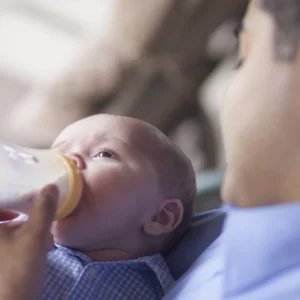

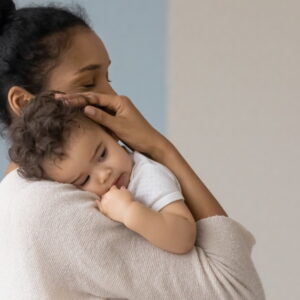
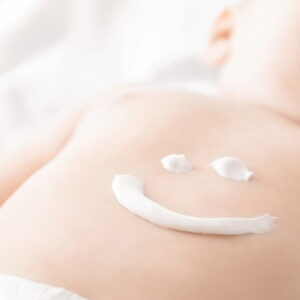
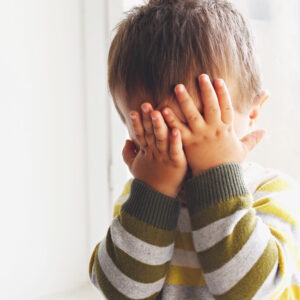
That’s why I always encourage people to put their child into swimming lessons at an earlier age. Thank goodness my mom did it for my younger brothers.
Hi Shannon, I agree! Well done by your mom!